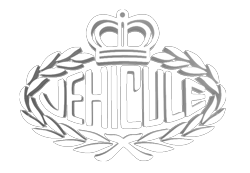
VÉHICULE had the chance to sit down with powerboat legend John Tomlinson of TNT Custom Marine and talk shop. Things got a little technical.
VÉHICULE: How did performance boat builders think about boat design back then? How has the design and performance of hulls evolved?
John Tomlinson: I can’t speak to how boat builders thought about it back then since I only started to get involved in the early ‘80s. But yes, things have definitely changed over time. Firstly, engines have gotten much more efficient and powerful. The biggest changes to the hulls came as new materials became available, which allowed us to create new designs. In the ‘70s and ‘80s, people were mostly making heavier fiberglass and wooden boats. They then began using Kevlar and other similar materials, which made the boats stronger and lighter. Now, boats are laminated with a number of core materials. It’s common practice nowadays to employ vacuum bagging and carbon fiber, which has made the boats far superior to those produced 30 or 40 years ago.

VÉHICULE: Was technology slow to be introduced into the sport?
John Tomlinson: It was only as the marine business as a whole started to grow and become more popular that you began to see the sport integrate new ideas and technology.
VÉHICULE: How did we go from vee hulls to largely catamarans? How did the sport come to be dominated by them?
John Tomlinson: It’s simple: They were faster than a conventional vee-bottom hull with the same power. The tunnel on a catamaran generates lift, allowing the boat to essentially fly across the water. By doing that it will have much less surface drag, making it a more efficient hull at speed than the vee-bottom would be. The first time I saw catamarans was in the early ‘80s when they were still unreliable. Once they became more reliable, they outran everything else.

VÉHICULE: How do you set a race boat like the Performance Boat Center MTI up? How do you keep the whole thing from just blowing over backwards?
John Tomlinson: The answer to this can get very lengthy, but in short, we make the call on gear ratios, propeller sizes and balance of the boat depending on the conditions and race courses themselves. By adjusting each of these elements in just the right way, we can make a boat the best that it can be. We want to run the boat as freely as possible without it being too tight to the water, too loose on the water, or not on the water at all. We push these boats to what we feel its limits are, but occasionally one can get away from you when you’re trying to go as fast as possible.

VÉHICULE: Have any technologies from offshore racing made their way to the consumer boat market?
John Tomlinson: Yes, many of the pleasure boat catamarans and vee-bottoms across the board are running hulls, engines, drives and materials that are similar or even identical to those on our race boats. That said, most of these consumer products have open cockpits whereas the racing cockpits are enclosed. We’re strapped in there, which lets us run the boats much harder than we would in an open cockpit, especially in adverse conditions.
VÉHICULE: The outboard market is exploding at the moment. What is driving this? What makes outboards such a good power package for consumers?
John Tomlinson: Outboards are making much more horsepower than when we started. You can get up to 450 horsepower out of an engine and still have it last a very long time. The big outboard power that’s available now has enabled manufacturers to build large vessels with multiple engines that are much more reliable and require far less maintenance than the old inboard gas engines.

VÉHICULE: You have had one of the most accomplished careers of anyone in the history of the sport. Is there one championship or event that stands out most as a highlight?
John Tomlinson: You know, I look at each upcoming race or championship as the most important one rather than looking back at the past ones. That said, there are a few that come to mind: my first year racing in 1986, my open class undefeated season in Zero Defect in 1996, the UIM World Championship in Jolly Motor in 1997, the Drambuie on Ice teams, the Bacardi Silver and Bud Light years and racing for Team Abu Dhabi with MTI. Last but not least, the past three years racing for the Performance Boat Center/Jimmy Johns team have been amazing.
Questions by Cole McGowan.
Read the full interview in VÉHICULE.





